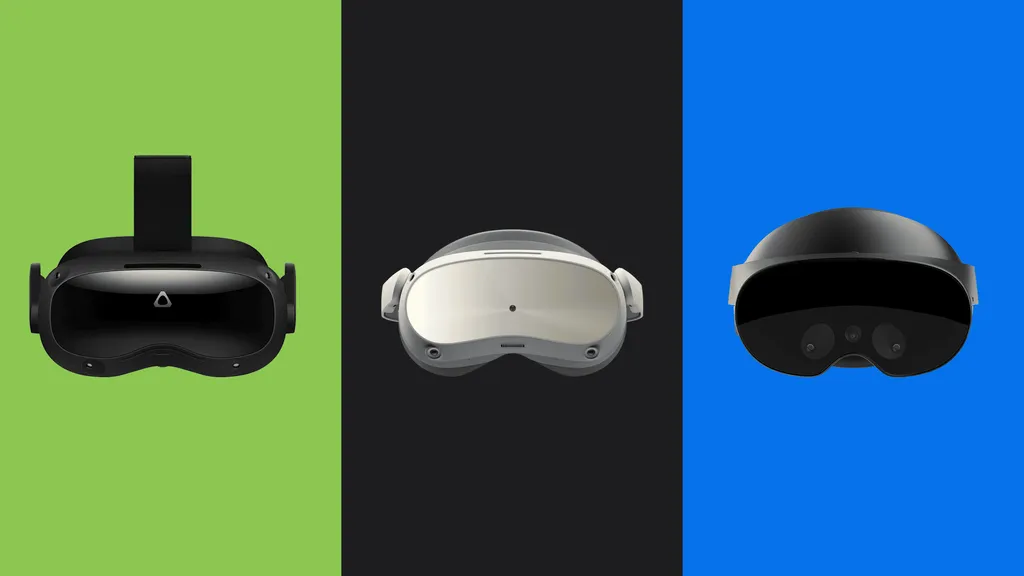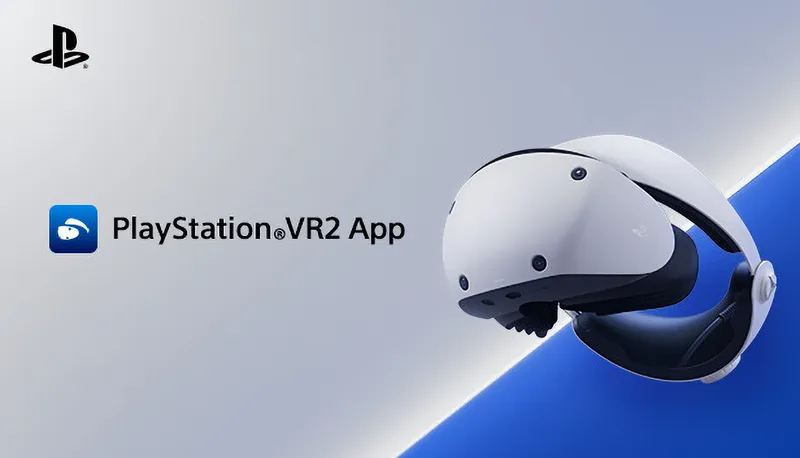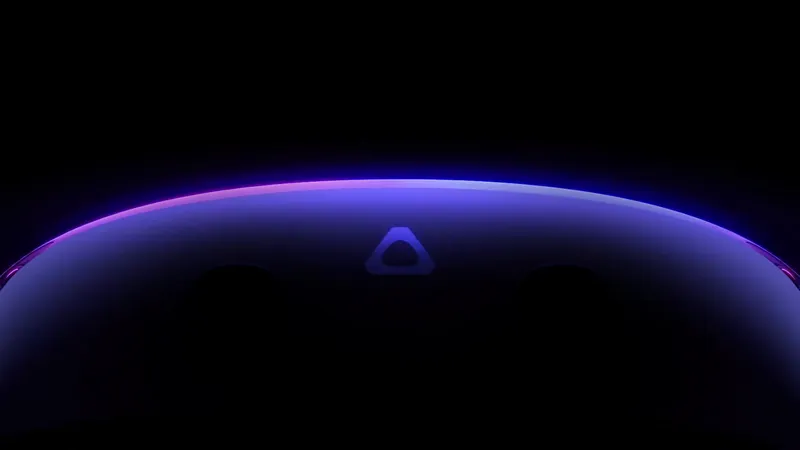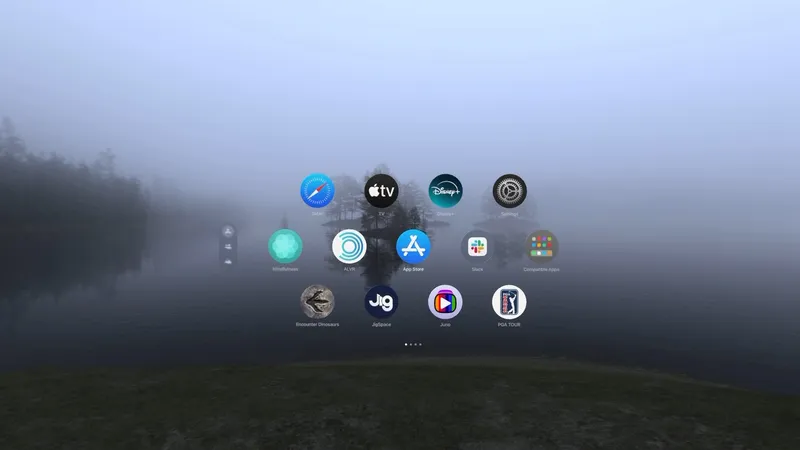Pico 4 Enterprise was announced today with a significantly lower price than its competitors. But how do its specs & features compare?
Here’s an on-paper comparison between it, HTC’s Vive Focus 3, and Meta’s Quest Pro:
| Pico 4 Enterprise | HTC Vive Focus 3 | Meta Quest Pro | |
| Release | December 2022 | June 2021 | October 2022 |
| Lens Type | Pancake | Fresnel | Pancake |
| Field of View | 105°×105° | 116°×96° | 106°×96° |
| Lens Separation | 62mm*–72mm (Automatic) | 57mm–72mm (Manual) | 58mm–70mm (Guided Manual) |
| Screen Type | LCD | LCD | QD-LCD |
| Pixels Per Eye | 2160×2160 | 2448×2448 | 1800×1920 |
| Local Dimming | 𐄂 | 𐄂 | Mini-LED |
| Snapdragon Chipset | XR2 Gen 1 | XR2 Gen 1 | XR2+ Gen 1 |
| RAM | 8GB LPDDR5 | 8GB LPDDR4X | 12GB LPDDR5 |
| Eye Tracking | ✓ | $250 Add-On | ✓ |
| Upper Face Tracking | 𐄂 | 𐄂 | ✓ |
| Lower Face Tracking | 1 Camera | $100 Add-On | 2 Cameras |
| Controller Tracking | By Headset | By Headset | Self Tracking |
| Colocation | 𐄂 | ✓ | Soon |
| Passthrough | Color | Grayscale | Depth-Correct Color |
| 6 GHz Wi-Fi | 𐄂 | ✓ | Early 2023 |
| Microphones | 2 | 2 | 3 |
| Headphone Jack | 𐄂 | ✓ | ✓ |
| Battery Life | 2+ Hours | 2 Hours | 1-2 Hours |
| Storage | 256GB | 128GB | 256GB |
| MicroSD Slot | 𐄂 | ✓ | 𐄂 |
| Price | €900 | $1300 / €1400 | $1500 / €1800 |
Of course, on paper spec sheets don’t tell the whole story – we have a review of the consumer Pico 4 comparing it to Quest 2, and we plan to review Meta’s Quest Pro and compare it to Pico 4 when it ships.
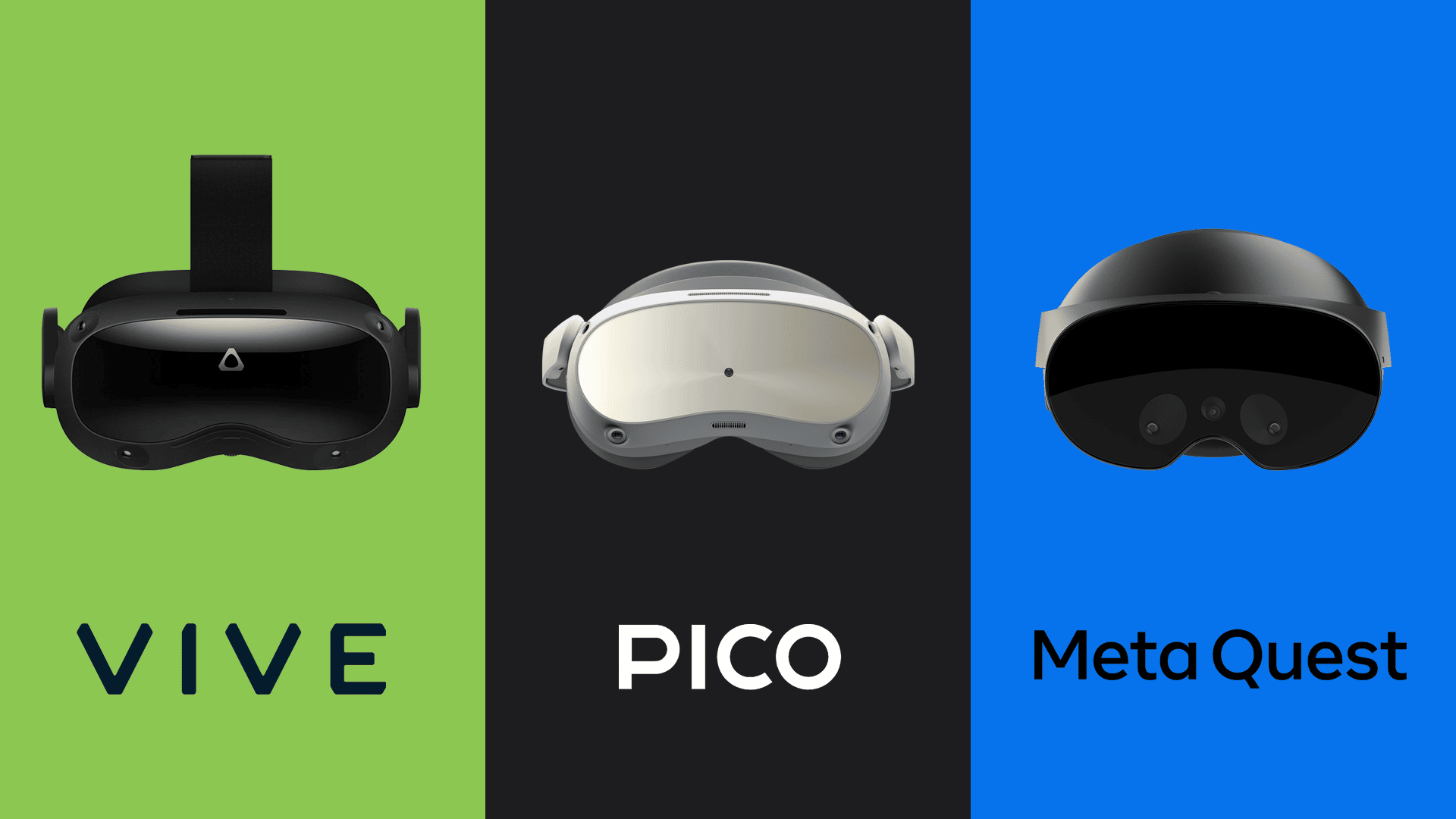
Pico 4 Enterprise and Vive Focus 3 are marketed and sold to businesses with business-focused system software and enterprise management features.
Meta hasn’t yet launched its equivalent Quest For Business offering – it’s coming next year.
Lenses & Displays
Vive Focus 3 has fresnel lenses, as did all headsets outside China when it released. Pico 4 Enterprise and Quest Pro have pancake lenses, which support smaller panels with a shorter gap to the lenses, and thus a slimmer & lighter visor.
Pancake lenses also tend to be sharper & clearer than fresnel, especially off-center, and exhibit less glare.
But Vive Focus 3’s lenses have a wider field of view than any current pancake lenses. Pico’s lenses have a taller field of view though.
![]()
Focus 3 also has by far the highest resolution, 2448×2448 per eye. Pico 4 Enterprise has 2160×2160, higher than Quest Pro’s 1800×1920.
All three headsets use LCD panels, but Quest Pro’s are unique. They have local dimming via over 500 Mini-LED backlights, and quantum dots. Meta claims the Mini-LEDs deliver 75% more contrast and the quantum dots enable a 30% wider color gamut.
Face & Eye Tracking
Quest Pro has 3 face tracking cameras: 1 for your upper face and 2 for your lower face. Pico 4 Enterprise has 1 face tracking camera, for your lower face.
Vive Focus 3 doesn’t have face tracking built-in, but HTC sells a $100 single-camera lower face tracking add-on.
Pico 4 Enterprise and Quest Pro have eye tracking built in. Vive Focus 3 doesn’t, but HTC sells a $250 add-on.
All three systems use one camera per eye. They also all support Eye Tracked Foveated Rendering – the technique where only the small region of the display you’re currently looking at is rendered in full resolution, thus freeing up performance or allowing for a higher base resolution, since the rest is lower resolution.
Eye tracking has other use cases too, such as making eye contact in social experiences and measuring your IPD.
IPD Adjustment
Each person has a slightly different distance between their eyes – their interpupillary distance (IPD). If a headset’s lenses aren’t closely aligned with your eyes, the image can be blurry and it can even cause eye strain.
All three headsets have continuous lens separation adjustment, but how exactly it’s set differs.
Pico 4 Enterprise handles IPD fully automatically. The eye tracking measures the distance between your pupils, and the motorized lenses move to match. They can actually get as close as 58mm. However, in our consumer Pico 4 review we noted the lenses crush your nose below 62mm, and Pico is only listing support for 62-72mm.
Quest Pro also uses its eye tracking to measure your IPD, but the lenses aren’t motorized. It guides you to move them by hand to the correct separation for your IPD.
Vive Focus 3’s lens separation adjustment is fully manual. As with most consumer headsets, you have to just choose what separation looks best.
Chipset & RAM
Pico 4 Enterprise and Vive Focus 3 use Qualcomm’s Snapdragon XR2 Gen 1 chipset. Quest Pro is the first headset with Snapdragon XR2+ Gen 1.
XR2 has the RAM stacked on top of the chip, whereas XR2+ has the RAM to the side to enable better thermal dissipation and thus higher sustained performance. Qualcomm said XR2+ can deliver “50% higher sustained power”. However, a Meta representative told UploadVR that on Quest Pro that figure “refers to the increased SoC power that supports additional sensors and new use cases” and apps not using these new features will only have “a little more performance headroom”.
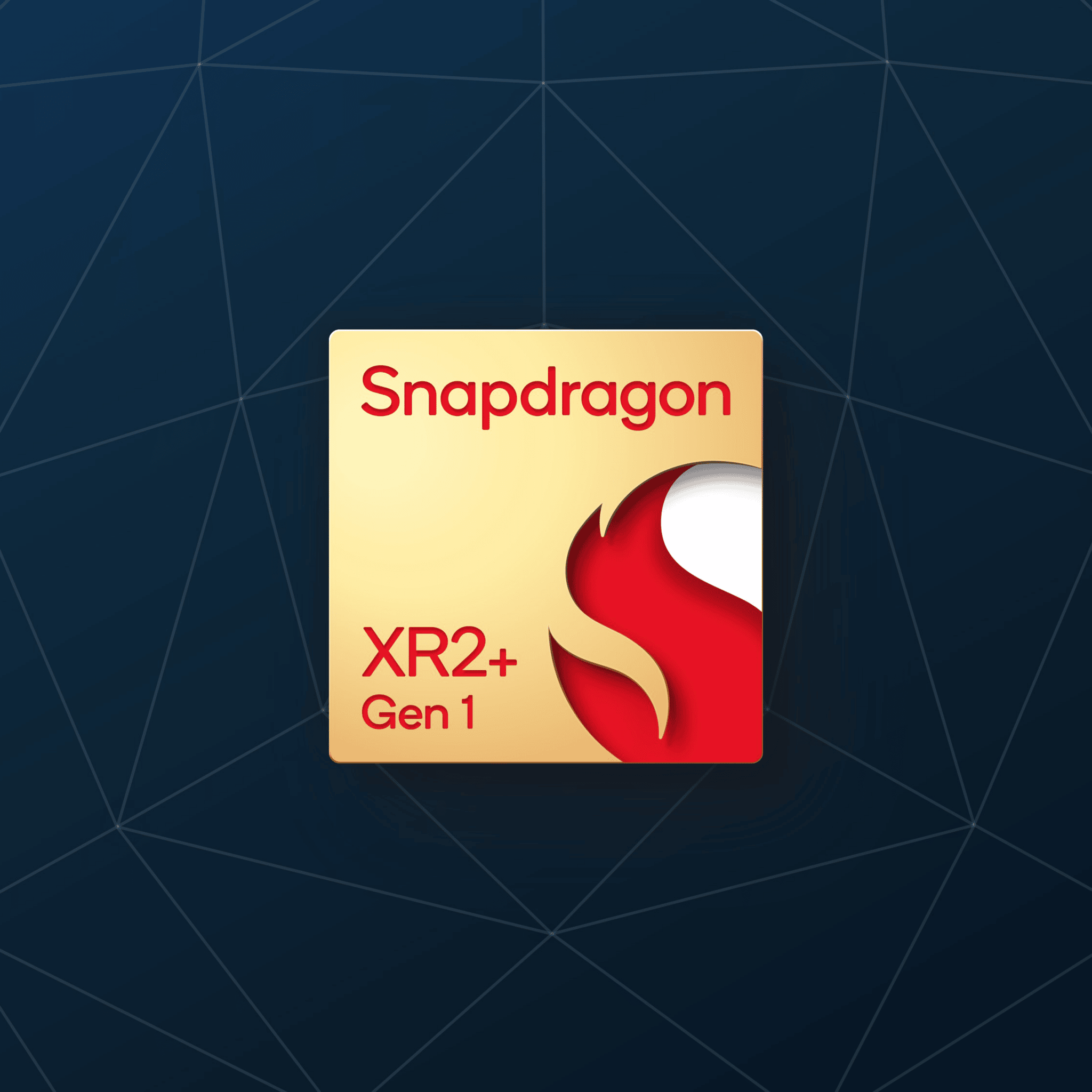
Vive Focus 3 has 8GB of LPDDR4X RAM, while Pico 4 Enterprise has 8GB of faster LPDDR5 RAM.
Quest Pro has 50% more RAM than either, with 12GB LPDDR5 RAM.
Passthrough & Mixed Reality
All three headsets can show you the real world via onboard cameras, but there are significant differences.
The passthrough on Pico 4 Enterprise and Quest Pro has color, while on Vive Focus 3 it’s in black & white.
But the more significant difference is in depth. Vive Focus 3 passthrough is monoscopic, meaning there’s no sense of depth at all. Pico 4 passthrough is stereoscopic, but it’s faked from the monoscopic RGB camera in the center so isn’t depth-correct – the scale looks off and it feels wrong.
Quest Pro’s passthrough is 3D and depth-correct, reconstructed from the two front tracking cameras then colorized with the RGB camera. It’s suitable for mixed reality apps, making Quest Pro both a VR and MR headset.
Colocation
Colocation means having multiple headsets sharing the same physical space with the same virtual coordinate space.
Pico 4 Enterprise doesn’t support colocation. Vive Focus 3 does, and it’s already being used in VR arcades to significantly reduce cost by removing the requirement for an external tracking system.
Quest Pro won’t have colocation support at launch, but it’s coming in a software update later this year.
Controllers
Pico 4 Enterprise and Vive Focus 3 use four fisheye cameras to track infrared (IR) LEDs under plastic geometry on their controllers. Vive Focus 3’s controllers house these IR LEDs in a ring in front of your hand, but Pico 4’s controllers have them in an arc over your hands. The advantage is that you can bring your hands much closer together without bashing together plastic you can’t see inside VR.
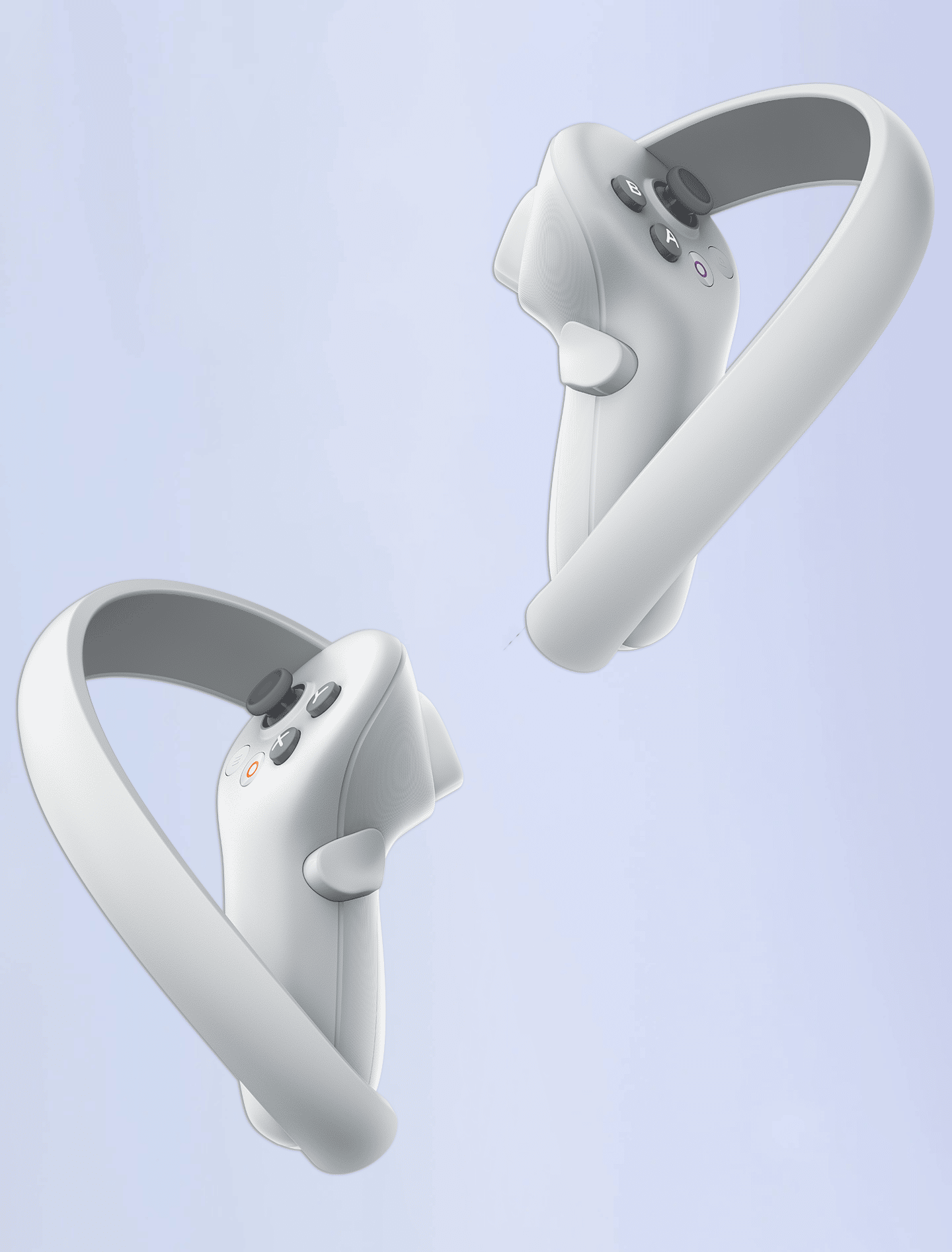
Quest Pro’s controllers are self-tracking, with three cameras and an onboard chipset, meaning tracking works at any angle regardless of where the headset is facing. Included stylus tips attach to the bottom so they can act as pens to draw on virtual whiteboards.
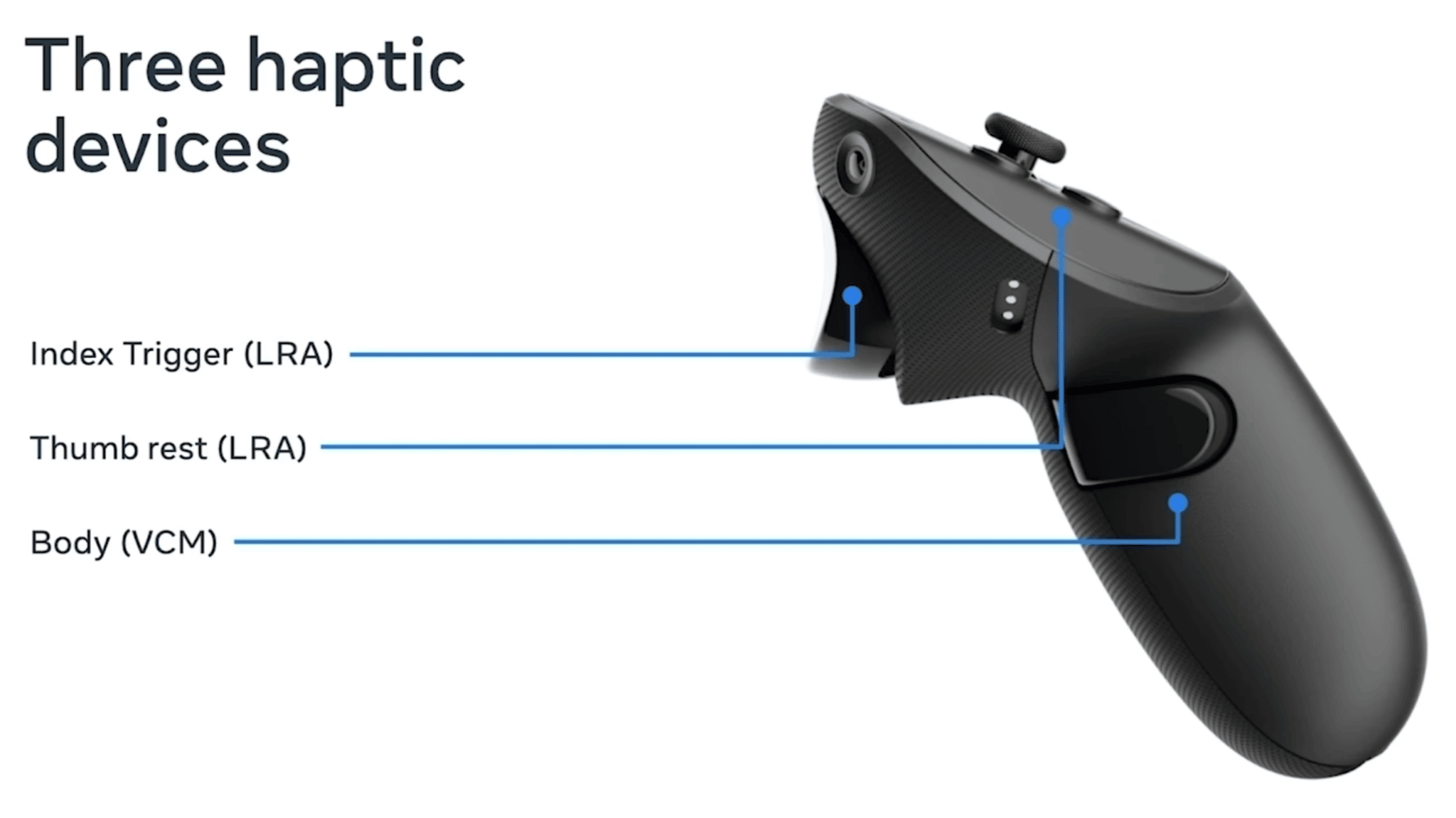
Vive Focus 3 controllers have a basic haptic motor, while Pico 4 and Quest Pro controllers have a VCM motor for complex realistic haptics. Quest Pro controllers also have LRA motors in the index trigger and under the thumb rest so developers can provide precise haptics to the index finger or thumb.
Battery & Charging
Pico 4 Enterprise has a listed battery life of 2+ hours, compared to 2 hours for Vive Focus 3 and 1-2 hours for Quest Pro. Meta “Consulting CTO” John Carmack said Quest Pro lasts longer when not using its new features, however.
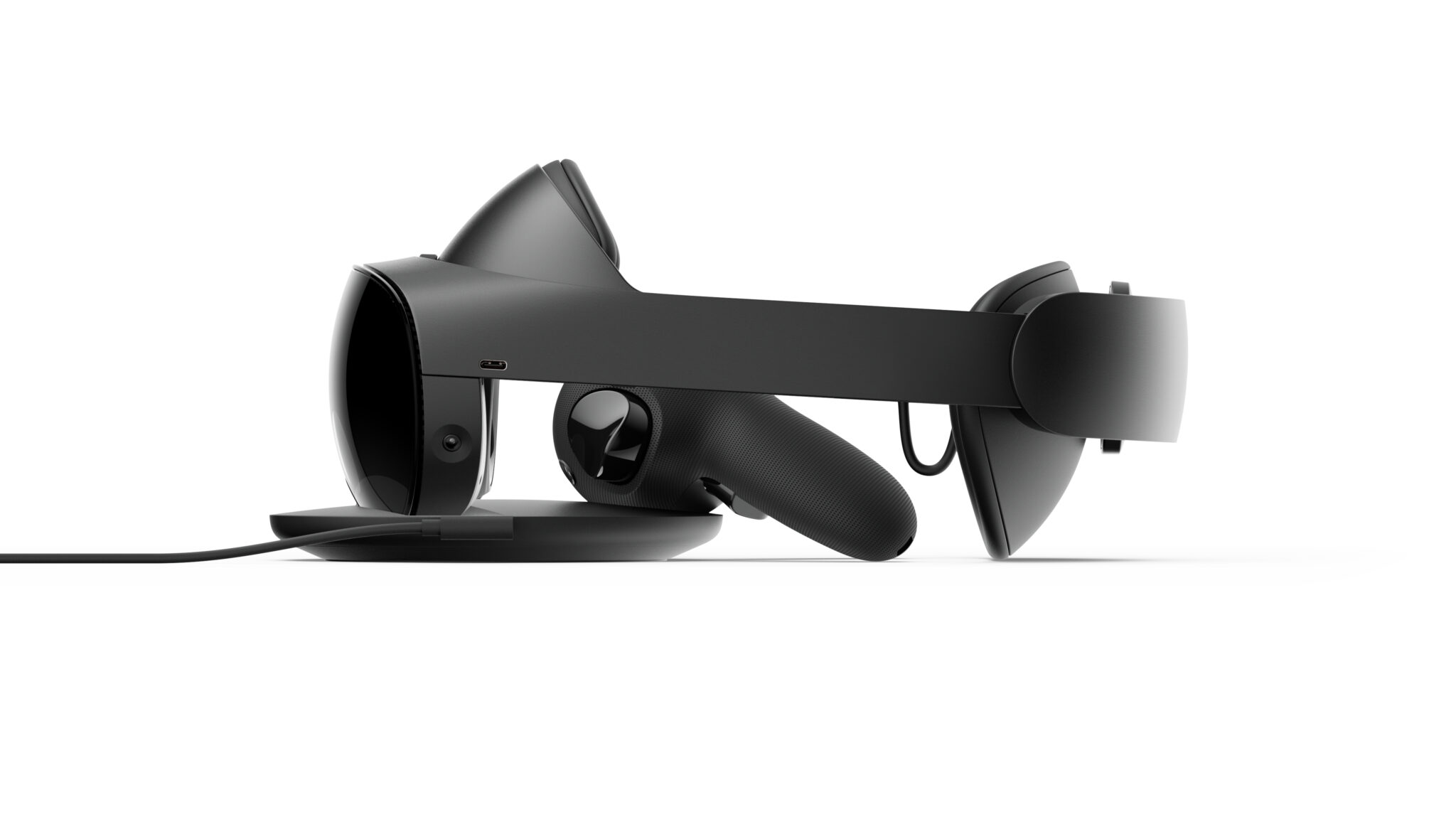
All three headsets charge via USB-C, but Quest Pro also has pogo pins to charge when set on the included dock.
Vive Focus 3’s unique feature is the battery is removable and swappable, so if you buy multiple batteries you can quickly get back into VR when one runs out.
Wi-Fi Bands
Pico 4 Enterprise supports Wi-Fi 6. Vive Focus 3 supports Wi-Fi 6E, and Quest Pro is getting Wi-Fi 6E in a software update early next year.
Wi-Fi 6E adds the new 6 GHz frequency band. The higher frequency, compared to the existing 2.4 GHz and 5 GHz bands, allows for higher bandwidth and less interference from other devices – though it can’t travel as far or penetrate walls as well.
Microphones
Quest Pro has a 3-microphone array, compared to the 2-microphone array on Pico 4 Enterprise and Vive Focus 3.
Meta claims this enables 20% better noise canceling and “advanced beamforming” compared to Quest 2.
Storage & MicroSD
Pico 4 Enterprise and Quest Pro have 256GB storage, but it can’t be expanded.
Vive Focus 3 has only 128GB onboard, but it has a microSD slot that supports up to 2TB cards.

